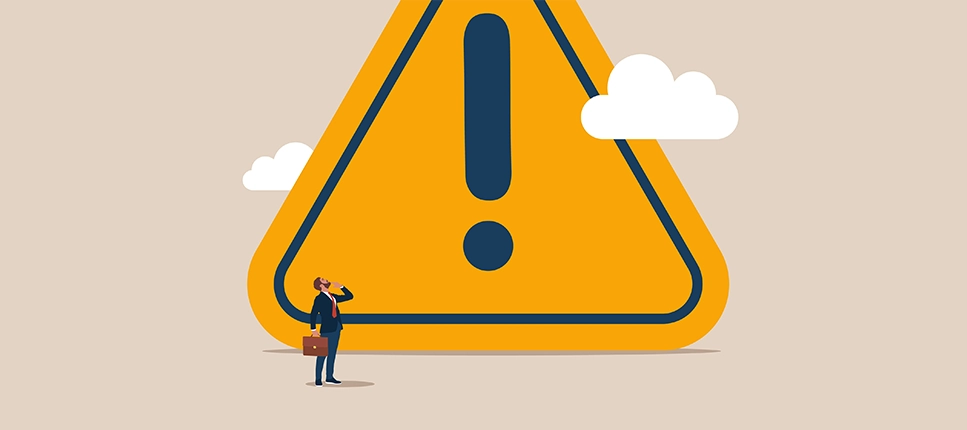Online education is becoming a standard offering in higher education institutions. Making use of new technologies it allows universities to explore different teaching avenues, and its flexible format is appreciated by students in managing their busy lives. However, as in the classroom and in this 2.0 era, online education also suffers from a worrying academic misconduct: cheating and plagiarism.
Cheating through the years
It was not so long ago that to catch a cheater you had to pay attention to furtive glances on neighbors’ works or to find small notes written on hands, or small sheets of paper hidden in the case of a calculator (depending on the level of creativity).
With the advent of the Internet, social networks and mobile devices, the technology has given new ammunition to ill-intentioned students and made “cut-and-paste” a massive weapon of “uneducation.” Beyond this habit, which has become a classic, other forms of academic cheating have benefited from technological advances (e.g., the possession of unauthorized resources, falsification, the use of writing services, and so on).
« 2.0 » more cheaters?
Has technology multiplied the number of cheaters in schools? This is a difficult question to answer and has ramifications that go beyond the educational system. It is known, however, that deception is part of the “survival” tactics used not only by humans but also by animals, whenever resources are limited. Acting upon this incentive to cheat comes down in the end to a cost-benefit evaluation. Nevertheless, being caught is nobody’s cup of tea.
According to Canada’s most extensive study of student dishonesty (Academic Misconduct within Higher Education in Canada, 2006), conducted among 17,000 students, 53% of respondents admitted cheating in their homework and 18% in their exams. In its first part, the authors reviewed research on the subject and identified the main factors that incite students to cheat. They are, in order:
- Personal problems.
- The context and culture of cheating inside and outside the university.
- A method of evaluation perceived as unfair by students, and a pedagogy that encourages non-compliance.
- The lack of coherence of universities and faculties between their discourse on academic dishonesty and the way they deal with it.
These factors are therefore not only personal but also institutional. For example one of them can be the lack of time, motivation or support from the administration causing teachers to hesitate to report cheating. Moreover, universities or departments that value publication and research to the detriment of teaching can falter as well. Also, turning a blind eye to a situation that could tarnish the university’s reputation, or deprive a promising, but at fault student of a scholarship can hinder efforts towards cheating prevention. In this regard, it is not only the weaker students who succumb to temptation but the best ones too, trying to keep their grades up.
A 2014 CBC / Radio-Canada survey, in which 42 academic institutions were involved, revealed that some 7,000 out of 920,000 students were caught cheating during a school year, which equals less than 1%. Should we conclude that academic misconduct is decreasing? One of the co-authors of the 2006 extensive study, Julia M. Christensen Hughes of the University of Guelph, Ontario, commented on the survey’s results:
Awareness that pays off?
Statistics concerning Université Laval recently reported a 75% increase in the number of educational offenses over a four-year period. The University does not reject the hypothesis that these figures may reflect a rise in cases of plagiarism and cheating. However, it argues that it could also mean that teachers are more likely to report student misconduct, given the outreach the university has done in recent years.
Even if this hypothesis proves to be true, it still raises doubts about the effectiveness of prevention within the main target audience: the students themselves. This process must deter not only mischievous individuals but also combat the unawareness that leads to the violation of the institution’s disciplinary rules. Significant efforts need to be made since some argue that a good part of the shortcomings of prevention is due to a lack of knowledge of the principle of intellectual property and what plagiarism includes.
Global solution
In a 2017 US research on integrity in online learning, the authors argue – like many other studies of academic cheating, in general – that countering cheating is not just about surveillance technology. To be effective, the solution must include both a preventive and a defensive approach. It must also consider values and behaviors that stand in the way of the established standards, which come not only from students but also from the institutions and faculties. If the efforts to promote a culture of academic integrity prove insufficient, any attempt to raise awareness will be in vain.
In light of the studies cited in this article, universities would also benefit from ensuring that their sanctions are truly dissuasive and that their case-handling system is well articulated. In other words, the problem must be attacked on all fronts, in a global manner. This applies even in an online environment, where the solution might seem to rely only on efficient surveillance technologies.
Online technologies to the rescue
With new technological avenues, new problems arise, but also new solutions. And since online education is a growing trend, effectively preventing cheating is well worth it. It could even become one of his strengths.
Currently, online education uses various technologies to discourage and identify mischievous students. Among the most common we can find identity authentication – including video surveillance, randomized questions, timed questions, or Internet browser lock. To the myriad of emerging technologies, we can add biometrics, which consists of identifying a person based on their physical characteristics, such as fingerprints or facial features. The predictive analysis, made possible by artificial intelligence (AI), could be another technology used against cheating. This allows a computer to analyze large amounts of data to deduct, for example, whether the behavior of a student doing an online exam is compliant.
Before adopting the most sophisticated of these tools, the institutions that can offer them will, of course, want to ensure that they are effective and respect the laws on personal data protection.
The anti-cheat forces of online training
If cheating seems here to stay, in class as well as online, the possibilities of online training may well change the situation in a few years.
This is because technologies evolved rapidly, offering better-adapted solutions, with increased efficiency over time. However, it is not just that. While the prevention and detection of academic dishonesty requires a global solution, online training has what it takes to intervene on several levels and in a cohesive way. Whether it is through video, micro-trainings or smartphone notifications, it offers a range of ways to inform, educate and raise awareness about the rules and consequences of this problem – in a more engaging way than what a simple page on the institution’s website can do. Not to mention that these tools can serve as a great vehicle to open the dialogue with students and promote the institution’s values.
What is academic dishonesty?
According to the authors of the Understanding Academic Misconduct study*, academic dishonesty refers to “anything that gives a student an unearned advantage over another. It includes any of the following: purchasing an essay; plagiarizing paragraphs or whole texts; impersonating another to take a test; sneaking a peek at another student’s answers; smuggling crib notes into a test; padding a bibliography; fudging laboratory results; collaborating on an assignment when the professor asks for individual work; or asking for a deadline extension by citing a bogus excuse.”
“Academic misconduct may also include forging or altering university documents (e.g., grade transcripts), writing a paper for another student, and hiding or damaging library resources.”
What is academic integrity?
Academic integrity, however, is more than the absence of misconduct, but rather “a commitment, even in the face of adversity, to five fundamental values: honesty, trust, fairness, respect, and responsibility”





